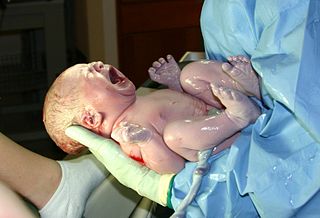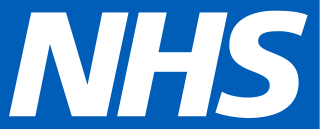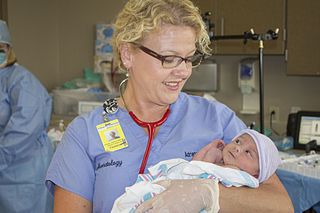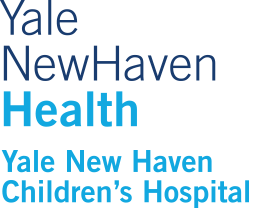
Intensive care medicine, also called critical care medicine, is a medical specialty that deals with seriously or critically ill patients who have, are at risk of, or are recovering from conditions that may be life-threatening. It includes providing life support, invasive monitoring techniques, resuscitation, and end-of-life care. Doctors in this specialty are often called intensive care physicians, critical care physicians, or intensivists.

Neonatology is a subspecialty of pediatrics that consists of the medical care of newborn infants, especially the ill or premature newborn. It is a hospital-based specialty and is usually practised in neonatal intensive care units (NICUs). The principal patients of neonatologists are newborn infants who are ill or require special medical care due to prematurity, low birth weight, intrauterine growth restriction, congenital malformations, sepsis, pulmonary hypoplasia, or birth asphyxia.

A neonatal intensive care unit (NICU), also known as an intensive care nursery (ICN), is an intensive care unit (ICU) specializing in the care of ill or premature newborn infants. The NICU is divided into several areas, including a critical care area for babies who require close monitoring and intervention, an intermediate care area for infants who are stable but still require specialized care, and a step down unit where babies who are ready to leave the hospital can receive additional care before being discharged.
Pediatric nursing is part of the nursing profession, specifically revolving around the care of neonates and children up to adolescence. The word, pediatrics, comes from the Greek words 'paedia' (child) and 'iatrike' (physician). 'Paediatrics' is the British/Australian spelling, while 'pediatrics' is the American spelling.

Children's National Hospital is a nationally ranked, freestanding, 323-bed, pediatric acute care children's hospital located in Washington D.C. It is affiliated with the George Washington University School of Medicine and the Howard University College of Medicine. The hospital provides comprehensive pediatric specialties and subspecialties to infants, children, teens, and young adults aged 0–21 throughout the region. The hospital features an ACS verified level I pediatric trauma center, the only one in the District of Columbia. Its pediatric intensive care unit and neonatal intensive care units serve the region. The hospital also has a rooftop helipad for critical pediatric transport.

Newborn transport is used to move premature and other sick infants from one hospital to another, such as a medical facility that has a neonatal intensive care unit and other services. Neonatal transport services such as NETS use mobile intensive care incubators fitted with mechanical ventilators, infusion pumps and physiological monitors capable of being used in a mobile environment. These transport systems seek to emulate the environment of a neonatal intensive care and permit uninterrupted care to occur in a referring hospital and then during the journey by road or air ambulance. Power and medical gas supplies are carried within the system as well as making use of external supplies; as available. Infant transport systems commonly weigh over 100 kg and present a challenge to vehicle operators in terms of weight, manual handling, crashworthiness and power consumption.
Princess Durru Shehvar Children's & General Hospital (PDSCGH) is a non-government and non-profit hospital in Hyderabad, Telangana, India. The hospital, which is named after Durru Shehvar, Princess of Berar and Imperial Princess of the Ottoman Empire, was established in 1989 to provide medical care to pre and post natal care to pregnant women and medical care facilities to children. To provide affordable health care to the general public medical services are subsidized by the government to make the healthcare more affordable and accessible to all sections of the society. The hospital later expanded its services to become a general hospital. The hospital is run by the Princess Durru Shehvar Children's Medical Aid Society.

Critical care nursing is the field of nursing with a focus on the utmost care of the critically ill or unstable patients following extensive injury, surgery or life-threatening diseases. Critical care nurses can be found working in a wide variety of environments and specialties, such as general intensive care units, medical intensive care units, surgical intensive care units, trauma intensive care units, coronary care units, cardiothoracic intensive care units, burns unit, paediatrics and some trauma center emergency departments. These specialists generally take care of critically ill patients who require mechanical ventilation by way of endotracheal intubation and/or titratable vasoactive intravenous medications.

Intermountain Primary Children's Hospital (PCH) is a nationally ranked pediatric acute care children's teaching hospital located in Salt Lake City, Utah. The hospital has 289 pediatric beds and is affiliated with the University of Utah School of Medicine. The hospital is a member of Intermountain Healthcare (IHC) and is the only children's hospital in the network. The hospital provides comprehensive pediatric specialties and subspecialties to infants, children, teens, and young adults aged 0–21 throughout the Salt Lake City and outer region. PCH also sometimes treats adults that require pediatric care. PCH is a ACS verified Level 1 Pediatric Trauma Center and is the largest providers of pediatric health services in the state. The hospital serves the states of Utah, Nevada, Idaho, Montana, and Wyoming, yielding an enormous geographic catchment area of approximately 400,000 square miles. The hospital is one of the only pediatric hospitals in the region.

Rainbow Babies & Children's Hospital is a pediatric acute care children's teaching hospital located in Cleveland, Ohio. It is affiliated with Case Western Reserve University School of Medicine and has a neonatal intensive care unit (NICU), pediatric intensive care unit (PICU), and level 1 pediatric trauma center.

The Timpanogos Regional Hospital is a hospital located in Orem, Utah, United States. It is owned and operated by MountainStar Healthcare. The hospital was opened in 1998 as a unit of Columbia Hospital Corporation.

East Tennessee Children's Hospital is a private, independent, not-for-profit, 152-bed pediatric medical center in Knoxville, Tennessee. The hospital's primary service area includes 16 counties in East Tennessee, and its secondary service area includes counties in southwest Virginia, southeast Kentucky and western North Carolina.

A pediatric intensive care unit, usually abbreviated to PICU, is an area within a hospital specializing in the care of critically ill infants, children, teenagers, and young adults aged 0–21. A PICU is typically directed by one or more pediatric intensivists or PICU consultants and staffed by doctors, nurses, and respiratory therapists who are specially trained and experienced in pediatric intensive care. The unit may also have nurse practitioners, physician assistants, physiotherapists, social workers, child life specialists, and clerks on staff, although this varies widely depending on geographic location. The ratio of professionals to patients is generally higher than in other areas of the hospital, reflecting the acuity of PICU patients and the risk of life-threatening complications. Complex technology and equipment is often in use, particularly mechanical ventilators and patient monitoring systems. Consequently, PICUs have a larger operating budget than many other departments within the hospital.

The Children's Healthcare of Atlanta (Children's) Egleston Hospital is a nationally ranked, freestanding, 330-bed, pediatric acute care children's hospital located in Atlanta, Georgia. It is affiliated with the Emory University School of Medicine and one of three hospitals in the Children's system. The hospital provides comprehensive pediatric specialties and subspecialties to infants, children, teens and young adults age 0–21 throughout the Atlanta region. Egleston hospital has been verified as a level I pediatric trauma center since 2019 by the Verification Review Committee (VRC), an ad-hoc committee of the Committee on Trauma (COT) of the American College of Surgeons (ACS). It is the first and only Level I Pediatric Trauma Center in Georgia. Its regional pediatric intensive-care unit and neonatal intensive care units serve the region. The hospital also has a rooftop helipad for critical pediatric transport.

The Children's Acute Transport Service (CATS) is a publicly funded specialised regional intensive care transport service for critically ill children. CATS is the busiest Paediatric Intensive Care Transport Service in the UK and covers the 50 District General Hospitals in the North Thames and East Anglia regions of England. CATS is part of the Great Ormond Street Hospital for Children NHS Foundation Trust.

Monroe Carell Jr. Children's Hospital at Vanderbilt, also known as Children's Hospital at Vanderbilt, is a nationally ranked pediatric acute care children's teaching hospital and entity of Vanderbilt University Medical Center in Nashville, Tennessee. The hospital is affiliated with Vanderbilt University School of Medicine's Department of Pediatrics.

A neonatal nurse practitioner (NNP) is an advanced practice registered nurse (APRN) with at least 2 years experience as a bedside registered nurse in a Level III NICU, who is prepared to practice across the continuum, providing primary, acute, chronic, and critical care to neonates, infants, and toddlers through age 2. Primarily working in neonatal intensive care unit (NICU) settings, NNPs select and perform clinically indicated advanced diagnostic and therapeutic invasive procedures. In the United States, a board certified neonatal nurse practitioner (NNP-BC) is an APRN who has acquired Graduate education at the master's or doctoral level and has a board certification in neonatology. The National Association of Neonatal Nurse Practitioners (NANNP) is the national association that represents neonatal nurse practitioners in the United States. Certification is governed by the National Certification Corporation for Obstetrics, Gynecologic and Neonatal Nursing Specialties (NCC).
Pediatric early warning signs (PEWS) are clinical manifestations that indicate rapid deterioration in pediatric patients, infancy to adolescence. A PEWS score or PEWS system refers to assessment tools that incorporate the clinical manifestations that have the greatest impact on patient outcome.

Yale New Haven Children's Hospital (YNHCH) is a 202-bed pediatric acute care children's hospital located in New Haven, Connecticut. The hospital is affiliated with the Yale School of Medicine. The hospital provides comprehensive pediatric care to infants, children, teens, and young adults aged 0 to 21 in Connecticut and throughout New England. Yale New Haven Children's Hospital also features a Level 1 Pediatric Trauma Center, one of two in the state.

Oklahoma Children's Hospital at OU Health is a nationally ranked, freestanding acute care women's and children's hospital in Oklahoma City, Oklahoma. It is affiliated with the University of Oklahoma College of Medicine. The hospital features all private rooms that consist of 246 pediatric beds. The hospital provides comprehensive pediatric specialties and subspecialties to infants, children, teens, and young adults aged 0–21 throughout the region. The hospital also sometimes treats adults that require pediatric care. The hospital has a rooftop helipad and is an ACS verified level 1 pediatric trauma center, the only one in Oklahoma. The hospital features a regional pediatric intensive-care unit and an American Academy of Pediatrics verified level IV neonatal intensive care unit.
















